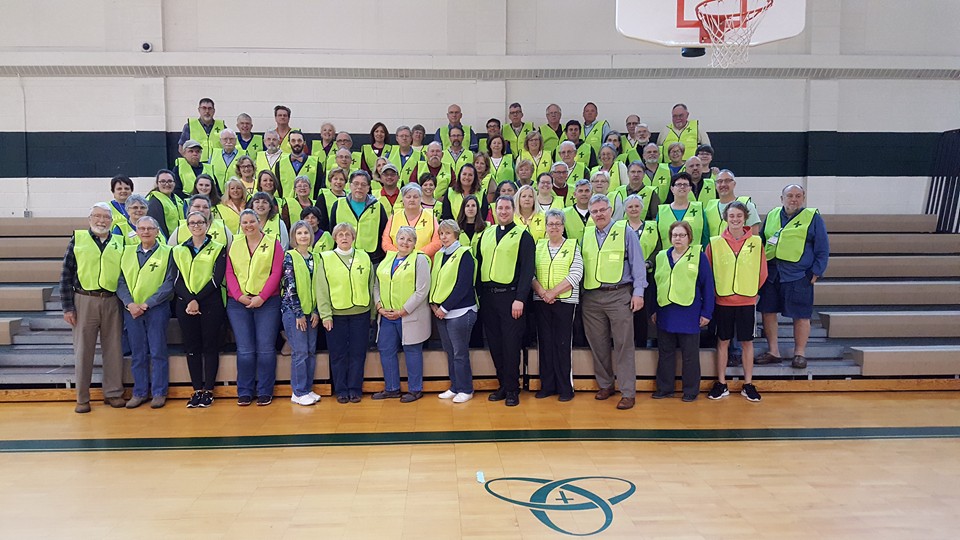I know the feeling, you’re up late watching the news and you see pictures and videos of unspeakable destruction. Houses rendered to toothpicks, people lining up for an ever dwindling supply of food, and calls for donations from all of your favorite brands. Your empathy or perhaps even sympathy is peaked as you hear the tearful stories of people who have lost everything to a hurricane or earthquake or wildfire. As you fiddle the credit card in your wallet debating whether or not to get on the next flight, consider these thoughts about self-deployment.

1. Disaster scenes are, by their very nature, chaotic
People have lost their homes and even the most basic needs such as food and clothing. As they anxiously dig through piece after piece of their damaged or destroyed possessions they are constantly interrupted by the distant whine of emergency sirens or heavy machinery threatening to take the last remnants of their former life with them. Government Agencies, Insurance assessors, and non-profit organizations are criss-crossing the cluttered streets trying to make their assessments and in turn reduce people’s lives into dollars and statistics. And this is when you only have certified disaster response teams doing their work. Imagine if this were combined with tens or hundreds of well meaning self-deployed volunteers. The chaos would escalate and would certainly get out of hand. Self-deploying limits or even eliminates the effect of your volunteer service.
2. Duplicate and Unnecessary Service
You look at victims sorting through what is left of their most cherished belongings and your heart sinks. You see the roof over their head sagging or the walls stained from the flood waters. At this point, homeowners may be hopeful that since the floodwaters have receded or the aftershocks have stopped they can safely move back into their homes and pick up life where they left off. Encouraging words from a well-meaning but ill-informed volunteer might reinforce that hope to their detriment by telling them that they can help get them back into their homes. The truth is that often, while the home may look solid, the damage is deeper than the drywall and the mold or hairline cracks have rendered the house unlivable. Or perhaps worse, your assessment of the situation was already made by another agency and your assistance not only hinders future response but negates the assessment by the insurance company making the homeowner ineligible for their claim. Volunteering WITH a certified team helps to ensure that the work that you do is meaningful and effective and not counter-productive.
3. You WILL be turned away by law enforcement

With very few exceptions, disaster zones (especially the most devastating ones) are completely shut off to anyone besides the residents and business owners who are trying to preserve their lives and incomes, law enforcement and first responders, insurance agents, and CERTIFIED disaster response teams. If you are not one of those groups and have not been deployed for official business purposes, law enforcement will most likely turn you away. They do this to prevent looting, preserve or restore order, and provide some level of privacy and security to people who are forced to leave all of their personal belongings out in the open.
How do I get in?
I’m sure you agree with me, you now know that you can’t just show up at a disaster site and hope to make a difference. But your heart still aches for these people and you want to know how you can get in and help. Did you notice a recurring theme in the 3 reasons listed above? The idea of a CERTIFIED disaster response team kept coming to the surface. The federal government has provided guidelines and basic requirements to certify teams from community centers, schools, churches, and non-governmental organizations to deploy their teams into disaster zones. Said a different way, Lutheran Early Response Training (LERT) is a curriculum which meets these basic requirements and allows you and your church to deploy into any disaster zone where you have been called. Going through this brief, one day course gets you a brightly colored vest which clearly identifies you as a member of a Lutheran Early Response Team, an official wallet sized identification card, and the safety information and basic skills that you will need to provide both spiritual and material assistance to those in need. Hosting a LERT training at your congregation also inserts you into a network more than 14,000 Lutheran Volunteers who are deployed by District Disaster Response Coordinators in each of the 35 districts.

By being a member of a LERT team, YOU can provide timely and effective response to exactly the people who need it the most. Contact LCMS Disaster Response TODAY to learn about how you can avoid getting shut out of disaster zones and connect with or start a LERT team in your area so that next time you see those images on the news, you can take part in sharing Christ’s Mercy.